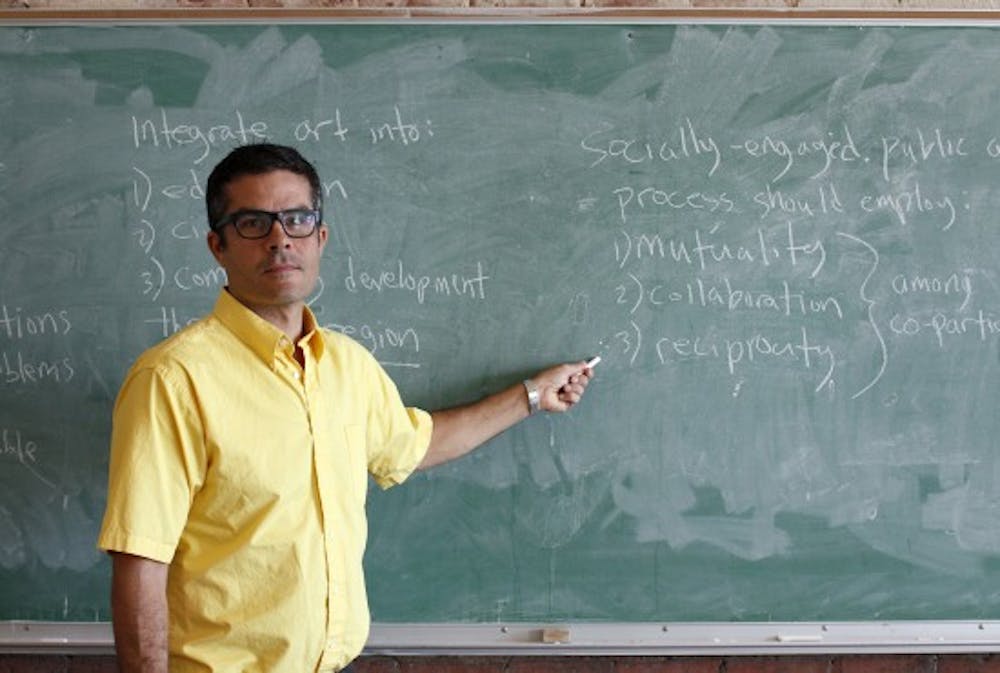Mark Tribe, chairman of the MFA Fine Arts program at the School of Visual Arts in New York City, focuses on the relationship between media technology and politics, using photographs, videos and performances in his artwork. Tribe is the author of “The Port Huron Project: Reenactments of New Left Protest Speeches” and co-author of “New Media Art.”
Tribe, who also founded a nonprofit organization that supports and encourages art involving technology called Rhizome, will talk about his work as part of the Hanes Visiting Artist series today.
Staff writer Juanita Chavarro spoke with Tribe about his work.
DAILY TAR HEEL: When did you get interested in protest art?
MARK TRIBE: I’ve been exploring these issues probably since about 2006.
When I was first teaching at Brown University, I noticed — it was about two years into the war in Iraq — and I noticed that there wasn’t a lot of protest visible on campus, protest against the war, and my students didn’t seem particularly eager to talk about what was happening in Iraq at the time.
I had gone to Brown University as an undergraduate 20 years earlier, and at that time there were a lot of protests against Brown’s investments in companies that were doing business in South Africa.
In fact, when I first got there as a freshman in September of 1985, the students had erected a shantytown in the middle of campus as a kind of a protest, and so I started thinking about how things had changed so much in the intervening 20 years and was thinking about how the role of protests had changed a lot and how the relationship between how people expressed their politics and the media had changed.
I started this project (the “Port Huron Project”) to reenact protests from the Vietnam era at the same locations where they were originally given and cast actors to do it, and my work has continued to focus on those kinds of questions in different ways since then.



